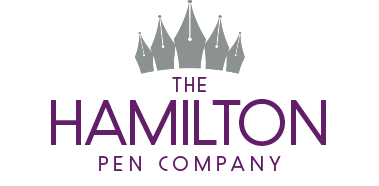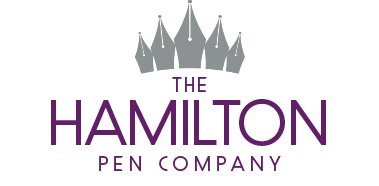A Brief History of The Pilot Corporation
The early 20th Century saw the rise of international imports of stationery to the UK and the rise of Japanese writing instruments. One of the biggest names in Japanese stationery is Pilot- now a household name - they first launched in Japan in 1918 at a time where the country was beginning to open up to Western influences. The socioeconomic circumstances of the time allowed for unusual economic growth and industrialisation of the previously agriculturally dominant nation. As with many innovations in the world of stationery and writing instruments, the concepts which bore the inception of the brand grew from the founders’ desire to improve what they saw as flaws in the fountain pens entering the Japanese markets from the West with the growth of international trade.
When exploring the success of Pilot pens we can of course look to the circumstances of the company’s birth but ultimately the success of the brand comes from unique and iconic products which appeal to markets in both Japan and the West. The exceptional business acumen of Pilots’ management to ensure that every aspect of the company’s growth was responded to and reflected by their brand, marketing and promotional materials whilst also staying true to the 5 philosophies of the business established by the founder before the business was even incorporated!
There are five guiding principles that Pilot has maintained throughout its 104 year history.
1. Sansha Teiritsu - Three balanced forces
This is the principle of three balanced forces. Explained as three legs on a cooking pot, if one leg is shorter than the others the food will spill. This is applied to business with the three legs identified as the Manufacturer, the Distributor and the Consumer. All must be in balance or the business will topple.
2. Ukiwa Seishin - Shared joys and sorrows
This principle works on the idea that there should be solidarity in commercial relationships and all must work together in complete harmony to guarantee prosperity
3. Nankan Toppa - Overcoming difficulties
This principle is built on the spirit of sailors with Captain and crew working alongside one another to problem solve and achieve success.
4. Ichinichi Ishiin - One step per day
This principle translates to slowly but surely. Investing time and effort into following the right course leading to success.
5. Sishei Shinken - A genuinely committed approach
This principle ensures that at all points of R&D, production and marketing are completed sincerely and with consideration of the consumer. The aim is to create excellent products not to acquire extreme wealth at the cost of principles and morals.
These principles alongside technological advances in writing instrument manufacture and the application of ancient crafts to modern products have contributed to the undeniable success of the company both at home in Japan and Worldwide.
The Economic Development of Japan
Post WW1, international trade began to boom and many large manufacturing companies were being established (Panasonic & Sharp for example). Japan was in a surprising position of economic growth during World War one and the years immediately following. They were able to take advantage of an absence of European competitors on the world market and were therefore able to generate a trade surplus.

Japan had previously been heavily reliant on agriculture for its GDP but by the late 1920’s, manufacturing and mining had surpassed agriculture for the highest percentage GDP contributions. Communications and transportation had developed simultaneously to support the heavy industrial development. This period of high growth meant that whilst most industrialised nations experienced severe hardships from the Great Depression, the Japanese economy was not hit as hard and even reported a GDP expansion of 5% per year in the 1930s.

This growth meant that international contracts and trade agreements were being drafted and signed but the Japanese writing characters were complex and therefore were not easily adapted to commercial trade. Japanese characters had to be simplified and international calligraphy standards had to be adopted. It was during this time that many pen manufacturers were founded in Japan. One such company was Pilot. In fairness…if it wasn’t then this would be a very odd article!
By Any Other Name Would Smell As Sweet: The Many Names of The Pilot Corporation
We must begin our journey with Ryosuke Namiki, a mechanical engineer and professor at the Tokyo Merchant Marine College. Namiki became intrigued by fountain pens which had begun to gain popularity and gained the nickname ‘10,000 year brushes’ but he felt there were imperfections which could be improved upon.

It never ceases to amuse that so many inventions and adaptations are born of someone's requirements or feelings that products are inadequate. Namiki began by making gold nibs but soon expanded his idea and he took his skills in engineering to create a fountain pen prototype. Soon after, he formed a partnership with his colleague Masao Wada. Together they created the Namiki Manufacturing company and began producing writing instruments.

1926 was a big year for Pilot (which was still known as Namiki Manufacturing Company) as it established overseas offices in Singapore, Malaysia, Boston, Shanghai and London. They also began producing inks for their Japanese market. They would soon become as well associated with inks as they were pens. These markets were established, in part, with thanks to the innovation of reintroducing the 1200 year old art form of Maki-e into popular tastes and demonstrated to the West the beauty of the craft when applied to pens. Namiki and Wada took examples of these pens when negotiating international exports.

The Maki-e pens were highly sought after and one of the biggest steps in their distribution came in 1930 when they were exported under the guise Dunhill Namiki through Alfred Dunhill Ltd of London. Working with powerhouse Dunhill gave them a passport to market their pens in Europe. After Namiki (the company, not the man) changed its name, some products remained marketed through Dunhill.
Talking of name changes, the company went through a few rebrands. Both Wada and Namiki had ties to sailing and the seas so their shared passion led to the company being rebranded ‘Pilot Pen Co Ltd’ in 1938 as a tribute, Pilot refers to a fleet's flagship. The idea for the company was conceived whilst the men were away at sea and found the inadequacies of pens without reliable and sizeable ink reservoirs.
The name was changed once again in 1950 to the Pilot Ink Company Ltd and four years later a branch was opened in Brazil. Sub-companies were formed from the early 1970s onwards leading to the name Pilot Corporation being used from 1989 to cover all branches and aspects of the company and the decades of innovation, creativity and design which led Pilot to position itself as a world leading brand in writing instruments and inks.
Key Products in Pilots History
Without even knowing, you probably have a couple of Pilot products at home or at your office. Pilots product catalogue is so varied that you will find disposable pens, back-to-school & office essentials, everyday pens, collectables, utility inks, specialist inks and remarkable pens of all descriptions. Such a variety of products but a consistent and reliable level of quality means almost universal appeal. The enthusiasts and layman's can enjoy a Pilot product with equal aplomb.
Pilot manufactures a wide range of products under its own name and other brands, such as FriXion (erasable ink gel pens), Acroball (hybrid ink ballpoint pens); Pintor; B2P and Begreen (these last two are products with recycled components).
Pilot FriXion Ball 07 Erasable Rollerball Pen - Various Colours
Sub brands include: Better, Rex-Grip, Super Grip G (oil-based ballpoint); Precise, Hi-Tecpoint (rollerballs); Hi-Tec-C, G-2, Juice (or Pop'lol) (gel pens); and Coleto (customizable multi-pen system); Mogulair, Doctor Grip series, Super Grip, Fure Fure (2020) series (mechanical pencils); Automac (mechanical pencil equipped with automatic function); S series: S3, S5, S10, S20, S30 (drafting pencils). This only begins to scratch the surface!
Pilot Hi-Tecpoint V5 Refillable Rollerball Pen - 4 Colours
We would be here until the 150th anniversary celebrations if I were to outline each and every product, however, there are some products from Pilot which stand out as icons of the brand and come to mind when the name Pilot is mentioned.
Maki-e Lacquer Pens
Namiki made waves by being the first company to use the ancient Maki-e technique in their fountain pen creation in the mid 1920’s. A Maki-e specialist named Gonroku Matsuda was consulted and the process of using Maki-e art with fountain pens was developed. Designs would be completed by hand and the artists performing the process would remain students of the Kokkoai School founded by Matsuda. Keeping the ancient process and culture alive and respecting the authenticity of the process was important to Namiki.

To briefly outline Maki-e, it is a distinctive lacquerware technique developed approximately 1200 years ago. The Maki-e process requires a skilled hand to paint an image using lacquer applied with a very fine brush on the surface of the item - in this case a pen - detail is added with gold powder sprinkled into the wet lacquer so it dry cures into the piece.

Namiki and Wada collected together several Maki-e pens and used them as part of their pitch to expand their business in the mid 1920’s. Impressively, one of the first clients that they secured with these special pens was the Louvre Gallery in Paris.
In recent years Pilot has reignited the Namiki name as a subsidiary of Pilot to specialise in the Maki-e craft. Initially inaugurated in 1931, the artisan group Kokkokai was centred around the master Gonroku Matsuda in order to develop and improve the quality and craftsmanship of Maki-e fountain pens. Pilot-Namiki states “Sumo is Japan’s national sport, Maki-e is the nation’s light”.
Pilot Capless / Vanishing Point Pen
Perhaps one of the most iconic products from Pilot, The capless was revolutionary when it was launched in 1963. Only a year later Pilot won the ‘Most Recommended Product Award’ at the Paris international gift fair, in part due to the elegant complexity of its design. The capless fountain pen was the flagship of Pilots pens company and provides the perfect combination of luxury and technology, the design of which demonstrates so much brilliants that very little has changed with the workings of these pens from the very first model right up to the most recent limited editions. A simple cap end push-button is used to protract and retract the nib and when in the closed position, an ingenious airtight seal prevents the nib from drying out. The main difference with the first iterations of the capless is that they now come with a converter and allow for cartridges to be used.
Pilot Capless Gold Trim Fountain Pen - Blue
In 1972 the capless was reintroduced as the ‘Vanishing Point’ which remained fairly unchanged with the most significant change emerging in 2020 with the Pilot Vanishing Point LS. The LS stands for Luxury and silent…which it absolutely is. It was believed that the click from the mechanism may be distracting and impolite so the LS model was conceived of to eliminate this problem.
Pilot Custom Range
The higher-end products from Pilots bear the name ‘Custom’ or ‘Custom Heritage’; these ranges are entirely produced in-house with each part of the process being completed with precision and care to create a luxury and exclusive tool. Each model in the Custom and Custom Heritage ranges have a two or three digit number following the name Custom or Custom Heritage and Custom models are a stunning cigar shape and the Heritage models are flattened top and bottom.
Pilot Custom 823 Fountain Pen - Amber
Always elegant, sometimes surprising, never overrated the Pilot Custom range is a point of pride for the company. Early models were produced with specific elements designed to serve unique handwriting styles with Japanese markets being catered to specifically honouring history in a delightful nod to the simplification of Japanese calligraphy due to the growth of international trade as a catalyst for the boom in Japanese writing instrument brands.
Bottled Inks: Pilot Iroshizuku Inks
We have talked about the incredible Pilot Iroshizuku in our article ‘Pilot Iroshizuku Inks: Miniature Bottle - Mighty Inks!’
Pilot Iroshizuku inks are an homage to the Japanese history and culture from which the company came. With the company inviting you to “ draw your inspiration from natures breath and allow iroshizuku inks to take you on a poetic journey” it’s clear to see that the art of writing is alive and well in the heart of the developers at Pilot. The name of the range itself is a compound of the Japanese words ‘iro’ to mean colouring which is revealing of the vast range of variation in the palette of inks available, and ‘shizuku’ which translates to droplet, connecting with nature. There is a delicate beauty in the fact that each ink is meaningfully named to derive from natural landscapes and flora of Japan, a beauty which is embodied in the sleek Japanese minimalism of the bottle and label design.
Pilot Iroshizuku Ink - Shin-Ryoku (Forest Green)
Created towards the end of 2007, these inks were designed to be used in any pen with any nib on any paper...and they do not disappoint! In 24 luxurious and opulent colours created by Kiyomi Hasegawa, this ink range responds to the 15 years of discussion with customers of Kiyomi and the conclusion that not everyone wants to write in only blue or black.
Pilot at The Hamilton Pen Company
With a rich and interesting history Pilot is always a company we enjoy learning about but when pistons come to nibs nothing beats the variety, style, reliability and quality of Pilot pens. Whether a disposable V Fountain pen or Custom 845 Urushi fountain pen…Pilot is synonymous with excellence and innovation.
Explore our full range of Pilot Products at the Hamilton Pen Company.








